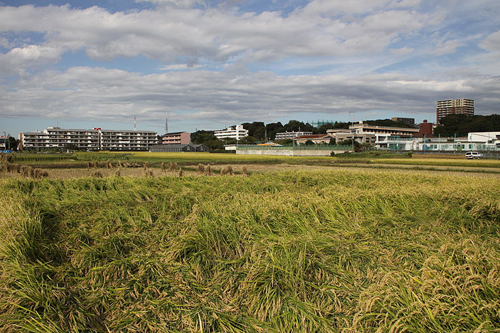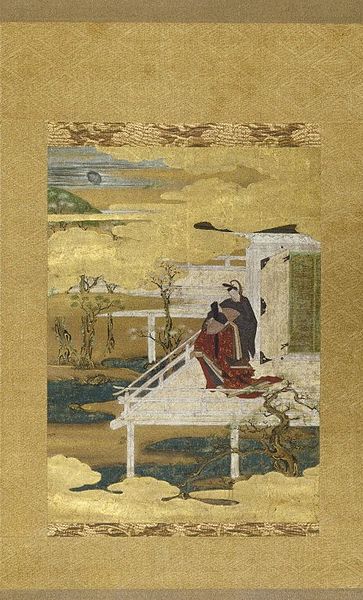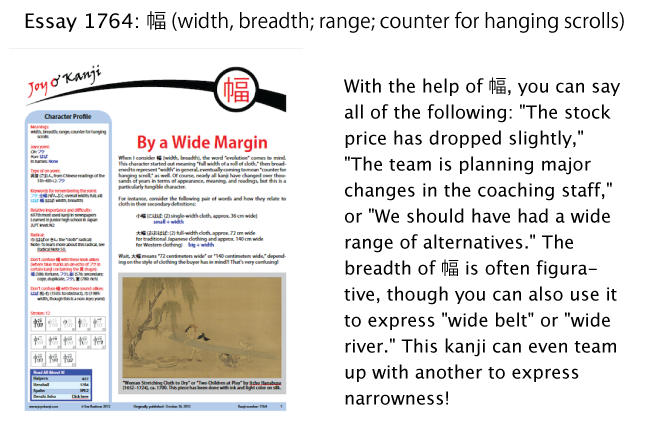Scarecrow Fallen in Battle: Part I
Some time ago, I encountered a word so specific that it could only be Japanese:
野分 or 野分き (のわき: late autumn windstorm in the countryside, typically caused by a typhoon or cyclone, esp. on the 210th and the 220th days of the year) field + to divide
When people calculate the 210th day of the year, they don't start counting from January 1. Rather, they begin with the first day of spring in the traditional Japanese calendar. Known as 立春 (りっしゅん), that day now tends to fall on February 4. Therefore, Days 210 (二百十日, にひゃくとおか) and 220 (二百二十日, にひゃくはつか) are around September 1 and September 11.
On those dates, the wind is supposed to be strongest in Japan, so farmers there have long kept the two 野分 dates in mind in a cautionary way.
The word 野分 is quite old. It literally means "to divide the grass on the field," as when wind parts grasses during a storm. This reminds me of one of my favorite words:
草分け (くさわけ: pioneer) grass + to divide
It's as if trailblazers divide the grasses, creating a path for the rest of us to follow.

Photo Credit: 多摩に暇人
Flattened rice field after a typhoon. The Wikipedia caption for this photo is 倒伏した稲:
倒伏 (とうふく: falling down)
稲 (いね: rice plant)
I never expected to encounter 野分 in real life, but then I spotted it right at the beginning of a haiku posted on Facebook! Yoshikazu Kunugi wrote the haiku, which charmed me to no end:
野分過ぎ
案山子討ち死に
朝日射し
typhoon gone
a scarecrow fell in battle
morning sunshine
-過ぎ (-すぎ: after)
案山子 (かかし: scarecrow; figurehead)
討ち死に (うちじに: dying in battle)
朝日 (あさひ: morning sun)
射し (さし: sunlight; rays of the sun)
A scarecrow fallen in battle! What a fantastic image, particularly if one thinks of the feckless scarecrow from the Wizard of Oz. Can you imagine his battling either an army or the elements?

Photo Credit: FG2
Typical Japanese scarecrows. They're standing in rice paddy that a poetic eye might recast as a battlefield.
Although Japanese farmers associate 野分 with very specific dates, haiku poets work with a much broader range of time when using 野分 as a 季語 (きご: word in a haiku that creates a specific image of a particular season). For them, 野分 applies to the approximate period between September 8 and October 8.
It must feel right to include 野分 in a poem, as it has deep literary roots.
Natsume Soseki named a 1907 novel 野分. Thematically, that book is linked to a short, lightweight work that preceded it, says Wikipedia. That earlier one was called 二百十日, a word we've already seen!
Much farther back in Japan's literary past, we find that Chapter 28 in the Tale of Genji was called 野分! For some reason, that famous work keeps popping up in JOK Notebook.
Everything is coming together in surprising ways. For instance, the Tale of Genji Wikipedia page contains a picture of a hanging scroll:

Well, my new essay on 幅 has a section on hanging scrolls because people use 幅 when counting those scrolls. Here's a sneak preview of that essay:

By the way, 野分 was also the name of a Japanese destroyer in World War II. That's yet another coincidence; I've been writing about the war in essay 1616 on 帝 (emperor, sovereign; god), which comes out next week.
Speaking of the future, I find the 野分 haiku so rich from a kanji perspective that I plan to explore it over the next few weeks. Meet you back here next week!


Add comment